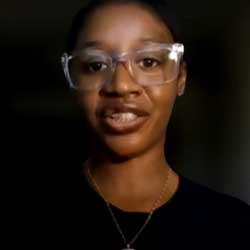 PALO ALTO, Calif. – For weeks now, the media has been pouring out news about former South African President Nelson Mandela's illness and repeated hospital stays. Meanwhile, the South African government has been saying for days that Mandela—who turns 95 on Thursday--is in "critical but stable condition," possibly suggesting he is on life-support machines.
PALO ALTO, Calif. – For weeks now, the media has been pouring out news about former South African President Nelson Mandela's illness and repeated hospital stays. Meanwhile, the South African government has been saying for days that Mandela—who turns 95 on Thursday--is in "critical but stable condition," possibly suggesting he is on life-support machines.
Mandela's high profile, say South African legal experts, makes it very difficult for someone as visible as this global icon to do advance care planning for the end of his life. Yet planning ahead with written forms is just what more and more people will have to do in an era of high-tech medicine and potentially unnatural life prolongation.
No information is currently available as to whether the human-rights icon ever wrote a so-called "advance directive," or chose a health care proxy – someone to make medical decisions for him if he became incapacitated.
Few Americans Have Written Wishes
A large majority of Americans have not written an advance directive or even told a loved one what they do or don't want done medically at the end of their lives. That's mostly because they don't know they can, say experts in palliative care and related hospice care.
Do they want a feeding tube? Do they want to be hooked up to a ventilator? Do they want more surgery, even if the benefits may be questionable?
At a New America Media training program for ethnic media reporters here at the Stanford University Medical Center July 11 and 12, sponsored by the California Health Care Foundation (CHCF), journalists heard from doctors, caregivers, health care advocates, social workers and chaplains about the availability of palliative care and the importance for people to let a friend or family member know the answers to these and related issues well ahead of time. They also learned about forms people could fill out and revise at any time, if they changed their minds.
During the educational program, the reporters learned the difference between hospice care and palliative care. Palliative care — which includes hospice-- focuses on relieving symptoms related to severe chronic illnesses. Hospice care is provided in the last six months of terminal illness, when an illness has gone beyond curative medical treatment and is no longer beneficial.
"Hospice care and palliative care may be terms many people are not familiar with," noted Emma Dugas of CHCF, which has developed and funded extensive studies on palliative care. With funding from the CHCF, 17 public hospitals in the state have begun palliative care programs, Dugas said.
Dugas presented findings of a survey that CHCF commissioned last year on the attitudes of Californians on end-of-life issues. "They are very widely misunderstood terms, especially in communities of color."
No Culture Wants Futile Medical Measures
The CHCF survey also shows that a majority of people in all ethnic groups prefers that doctors not take futile, heroic measures to keep them alive. But there was a significant gap between the 75 percent of white non-Latinos who said they do not want such invasive procedures and smaller majorities in other groups (58 percent of African Americans, 60 percent of Latinos and 67 percent of Asian and Pacific Islanders).
Three in four African Americans surveyed led the other ethnic groups in saying the being "at peace spiritually" in their final days is "extremely important" at life's end. Latinos were close behind (71 percent).
"We rely heavily on our faith, we rely on the power of prayer," said Virginia Jackson, chief of chaplaincy in the palliative care clinic at the Palo Alto Veterans Administration hospital.
While African Americans tend to have a "trust issue" with the medical profession, they are more likely to trust a health care professional who is there with them during prayers, she said.
Victoria Layton of the Office of Decedent Affairs at the Palo Alto VA hospital echoed Jackson's views. If patients don't see a "spiritual base" in their caregivers, "they shut down," she said.
There is no one-size-fits-all in the way physicians should approach patients about end-of-life issues, said V.J. Periyakoil, MD, director of Stanford's palliative care fellowship program, which educates and trains doctors.
Periyakoil has produced extensive health-education media on palliative care for multi-cultural older adults. She showed a video she developed dramatizing an actual case at the clinic in which the daughter of an elderly Chinese patient was reluctant to have her father's cancer physician discuss his "bad news" directly with him. Often in Chinese and other cultures, patients prefer to learn of distressing health news about them from a family member.
In this case, the doctor, a white woman, carefully discussed her father's advanced cancer with his daughter in another room. But also the oncologist got the daughter to agree to include her dad's voice in expressing how he wanted to get the news. It turned out that while the daughter feared her father's reaction, her dad said he went along with his family's wishes so they would experience less distress in accepting his terminal condition.
That sort of attitude is not uncommon among other Asian communities, Periyakoil said, but others are more open. She noted, "You cannot assume a family is a certain way."
Start Palliative Care Earlier
At the briefing, three elderly patients and family caregivers talked about how palliative care has eased their pain, enabling them to cope better and enjoy improved quality of life.
"It would have been much better if we had been in palliative care sooner," said Carla Reeves, caregiver for Warren Atkins, age 94. "We could have controlled his symptoms better."
Periyakoil dispelled the fear surrounding the term "palliative care," and disassociated it from the idea of approaching death. She noted that palliative care's well-managed combination of comfort care and medical intervention when needed has relieved both patients and family members so much that both on average actually live longer than those not benefiting from palliative treatment.
San Jose Mercury News science and health reporter Lisa Krieger explained how she had failed to talk with her father "about stuff that really mattered." That led to his experiencing enormous pain and suffering as doctors fought to keep him alive in the hospital before he died at age 88. At the time, she said, "I didn't know to ask for palliative care."
"I was totally blindsided when this happened to me," said Krieger, who drew material from her experience for her award-winning 2012 series, "The Cost of Dying."
Because the "silver-brown tsunami" of aging which, increasingly ethnic--baby boomers are fast approaching, health professionals should engage in "good end-of-life conversations" with diverse populations, said Susan Enguidanos, who teaches at the Davis School of Gerontology at the University of Southern California. Many ethnic elders have limited health literacy, she noted. Ethnic communities are also generally uncomfortable about openly discussing death and dying, she said.
"I personally think that hospice is a wonderful philosophy, but how you would convey it to someone who doesn't know what it is," observed Tino Plank, a nurse at Sutter Care at Home-Hospice.
People increasingly have the option of putting their wishes down in writing through advanced directives, as well as POLST (Physicians Orders for Life Sustaining Treatment) forms signed by both a doctor and patient. But people need to know that they can and should revisit these from time to time "because patients change their mind all the time," said Dr. Rebecca Sudore, associate professor of medicine at the University of California, San Francisco.
Portland and Seattle
Free Subscription to Breaking News
Free Subscription to Breaking News




















































































































































































































































































































































